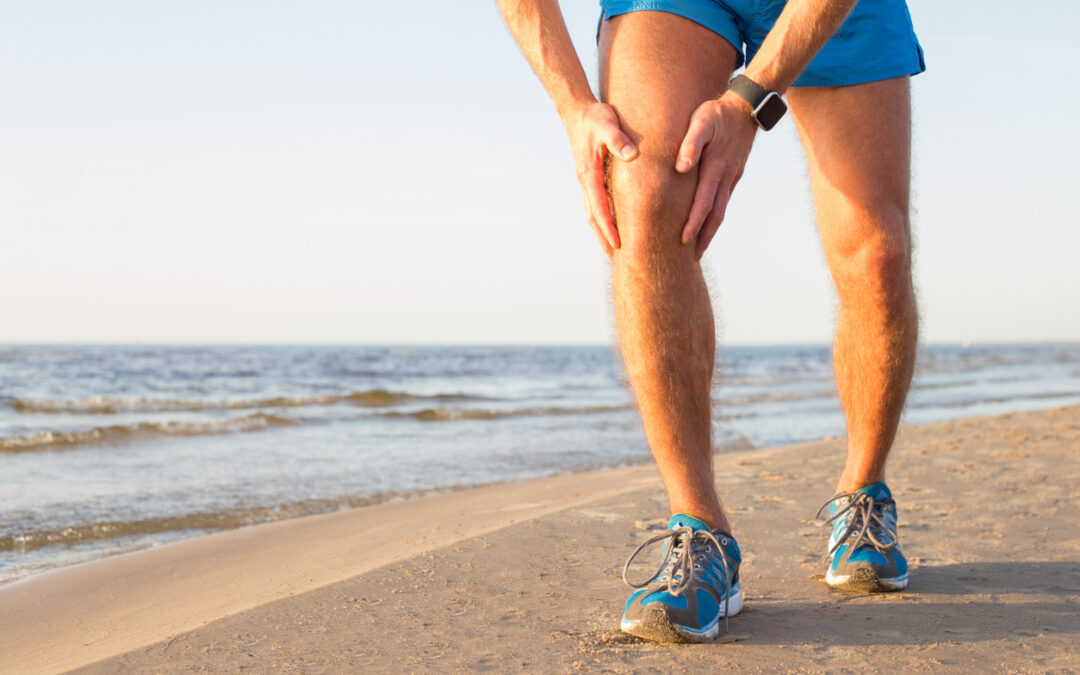An ACL injury isn’t just a strain on your knee; it can disrupt your entire routine. But fear not, because there’s a well-orchestrated path to healing – and it’s called physical therapy. This process involves distinct phases, each with its purpose of getting you back on your feet. So, let’s journey through what happens during physical therapy for an ACL injury, step by step.

Phase 1: Getting Acquainted and Managing Pain
When you begin your rehab journey, the first step is understanding where you stand. Your physical therapist will assess the extent of your injury and your overall health, crafting a custom roadmap for your recovery.
Right out of the gate, the focus is on tackling pain and inflammation. Gentle exercises and therapies like ice treatments step in to soothe the discomfort and reduce swelling. This phase sets the tone, prepping your knee for the journey ahead.
Phase 2: Rediscovering Motion and Freedom
As your knee mends, the spotlight turns to regaining the motion and flexibility that might’ve been compromised. This is where a mix of passive and active joint movements, coupled with hands-on stretches, enters the picture.
Working closely with your therapist, these exercises help your knee flex and extend more naturally. Gradually, you’ll sense your mobility improving, setting the groundwork for the next stage.
Phase 3: Building Strength and Boosting Stability
With improved mobility comes the need for strength and stability. Balancing those muscles around your knee becomes the priority to prevent future mishaps.
Your therapist will choreograph a series of exercises targeting your quadriceps, hamstrings, calf muscles, and the hip and core muscles. Think resistance bands, weights, and bodyweight moves – all coming together to fortify your muscles and ramp up stability.
Phase 4: Functionality Takes Center Stage
Stepping into the functional rehabilitation phase is like crossing a major checkpoint. Here, the focus shifts from isolated workouts to activities mirroring real-life scenarios. We’re talking squats, lunges, hops, and pivots – the building blocks of your everyday and athletic undertakings.
Your therapist customizes the exercises to match your lifestyle or sports involvement, making sure your knee is geared up to handle the rigors of daily life.
Phase 5: Mastering Balance and Agility
Ever heard of proprioception? It’s your body’s internal GPS, helping it navigate in space. And now it’s time to give it a workout. Welcome to the phase where exercises get more dynamic and demanding.
Balancing on wobbly surfaces, agility drills with ladder patterns, and one-legged challenges – it’s all about fine-tuning your knee’s ability to respond swiftly and gracefully. The aim? Reducing the risk of future tumbles.
Phase 6: The Return to Normalcy
The final chapter of your rehab saga is all about the triumphant return. Whether it’s returning to your sport or your day-to-day routine, this phase is about ensuring you’re ready to face the world with a confident knee.
Your therapist will evaluate your knee’s readiness, checking strength, flexibility, stability, and most importantly, your comfort. Athletes might get a dose of sports-specific training to ensure they’re back in the game. For everyone, it’s about getting back to life without hesitation.
In Conclusion
Physical therapy for an ACL injury is like following a carefully designed map to recovery. It’s about taking each phase – from pain management to regaining motion, building strength, and finally embracing normal life – one step at a time. With patience, determination, and the guidance of your therapist, you’ll not only heal but also conquer your comeback with confidence.

